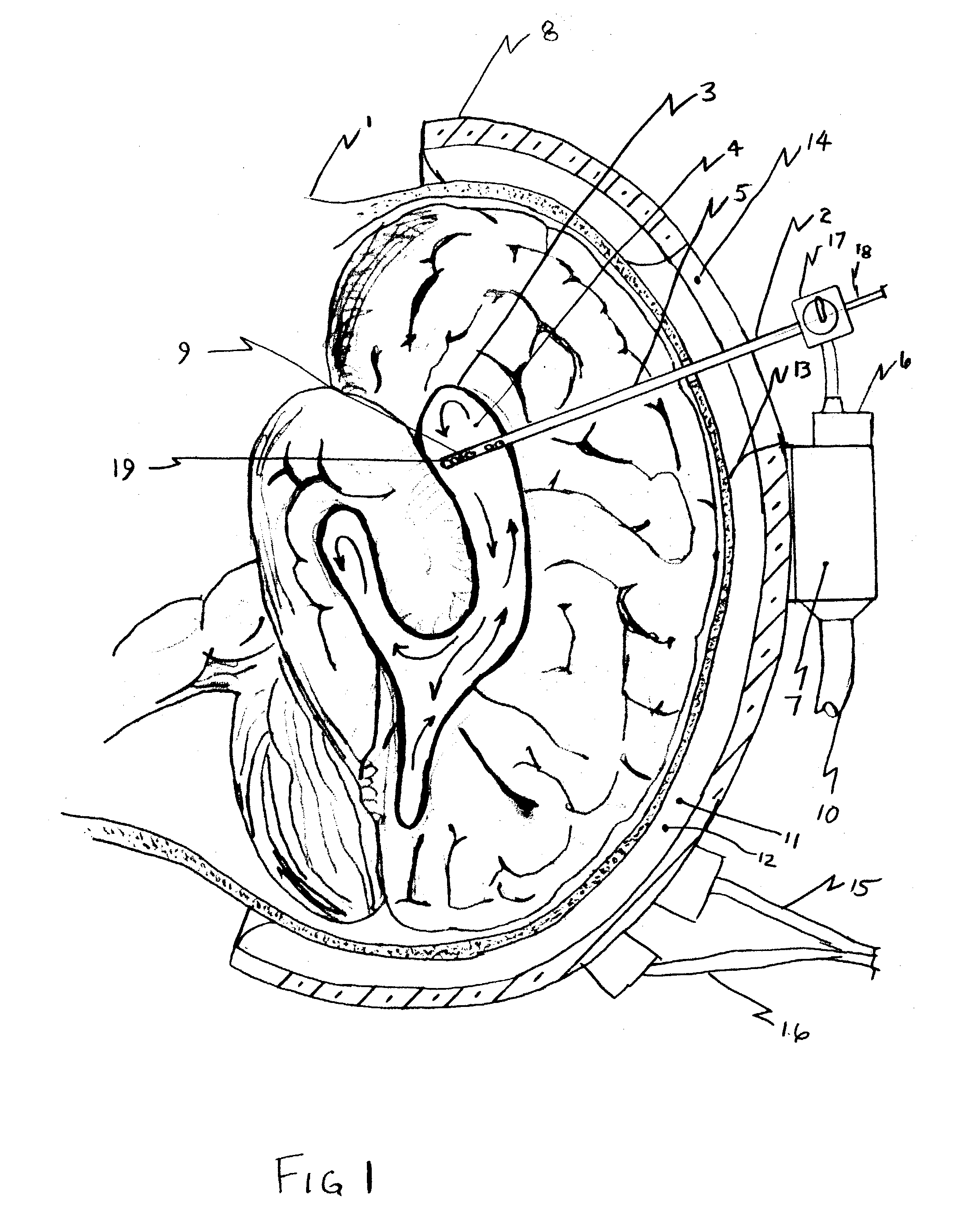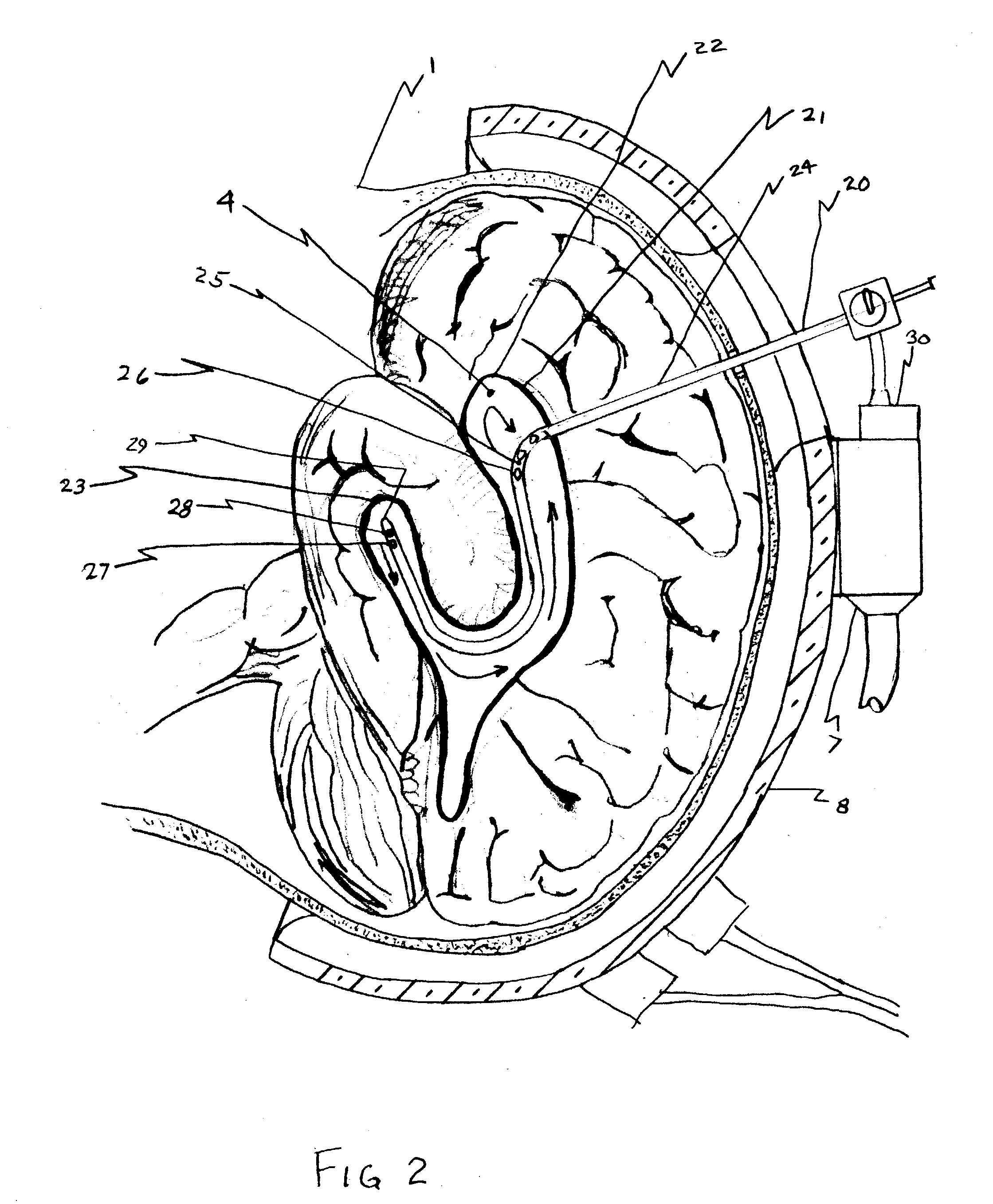Uniform selective cerebral hypothermia
a selective and cerebral technology, applied in the field of unilateral selective cerebral hypothermia, can solve the problems of critical or terminal rise in intra-cranial pressure, limited depth and duration of hypothermia, and patients suffering from stroke or head trauma
- Summary
- Abstract
- Description
- Claims
- Application Information
AI Technical Summary
Problems solved by technology
Method used
Image
Examples
Embodiment Construction
[0052] FIG. 1 depicts a sagittal section of a human head 1 and the normal ventricle-cooling catheter 2 into a operational position in a lateral ventricle of the brain 3. Also shown is the head-cooling cap 8 mounted on the head 1. Cerebrospinal fluid (CSF) 4 is withdrawn from the lateral ventricle 3 through fluid ports 19 in ventricle-cooling catheter shaft 5 into ventricle cooling catheter cooling camber assembly 6 which is then cooled by cooling module 7. Once the CSF is cooled, it is reinserted into lateral ventricle 3 through ventricle-cooling catheter shaft 5. This process is continued in a cyclical manner to obtain and maintain the target temperature of the CSF 4 in ventricle 3 as measured by temperature sensor 9 mounted on the distal end of ventricle-cooling catheter shaft 5. Cooling module 7 is connected to control console (not shown) by umbilical 10. Cooling module 7, cooling chamber assembly 6 and control console (not shown) work in operational relationship to withdraw CSF ...
PUM
 Login to View More
Login to View More Abstract
Description
Claims
Application Information
 Login to View More
Login to View More - R&D
- Intellectual Property
- Life Sciences
- Materials
- Tech Scout
- Unparalleled Data Quality
- Higher Quality Content
- 60% Fewer Hallucinations
Browse by: Latest US Patents, China's latest patents, Technical Efficacy Thesaurus, Application Domain, Technology Topic, Popular Technical Reports.
© 2025 PatSnap. All rights reserved.Legal|Privacy policy|Modern Slavery Act Transparency Statement|Sitemap|About US| Contact US: help@patsnap.com



